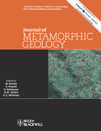
JOURNAL OF METAMORPHIC GEOLOGY
Scope & Guideline
Unveiling the secrets of metamorphic rock formation.
Introduction
Aims and Scopes
- Metamorphic Petrology:
The journal publishes studies that explore the mineralogical and textural characteristics of metamorphic rocks, focusing on the conditions and processes that lead to their formation. - Tectonic Processes:
Research addressing the relationship between metamorphic processes and tectonic activities, such as subduction, collision, and rifting, is a core area of focus. - Geochronology and Thermobarometry:
The use of geochronological techniques and thermobarometric methods to constrain the timing and conditions of metamorphism is a significant aspect of the research published. - Experimental Studies:
The journal includes experimental research that simulates metamorphic conditions in the laboratory, providing insights into mineral stability and reaction pathways. - Fluid-Rock Interactions:
Papers that investigate the role of fluids in metamorphic processes, including metasomatism and hydration, are frequently featured, highlighting their impact on mineral stability and metamorphic evolution. - Regional Metamorphism:
The journal emphasizes studies that detail the metamorphic evolution of specific geological regions, integrating field data with theoretical models to explain regional metamorphic histories.
Trending and Emerging
- High-Pressure and Ultra-High-Temperature Metamorphism:
There is an increasing focus on the study of high-pressure and ultra-high-temperature metamorphic conditions, particularly in subduction zone contexts, reflecting a growing interest in understanding extreme metamorphic environments. - Petrochronology:
Research utilizing petrochronological techniques to date metamorphic events and processes is on the rise, indicating a trend towards integrating geochronology with petrological studies for comprehensive metamorphic histories. - Microstructural Analysis:
The application of advanced microstructural analysis techniques, such as electron backscatter diffraction (EBSD) and atom probe tomography, is trending, allowing for detailed insights into mineral growth and deformation processes during metamorphism. - Geochemical Modelling:
Emerging studies focusing on geochemical modelling and thermodynamic simulations are gaining traction, providing a more nuanced understanding of the conditions leading to metamorphic transformations. - Metamorphism and Climate Change:
New research themes exploring the links between metamorphism and climate change, particularly in relation to tectonic uplift and erosion processes, are beginning to emerge in the journal's publications.
Declining or Waning
- Low-Grade Metamorphism:
Research on low-grade metamorphic processes has seen a decrease in publication frequency, possibly due to a growing emphasis on high-pressure and high-temperature metamorphism in current studies. - Sedimentary Metamorphism:
The exploration of metamorphic processes in sedimentary contexts is less frequently addressed, suggesting a waning interest in the metamorphic transformation of sedimentary rocks compared to igneous and high-grade metamorphic rocks. - Classical Metamorphic Facies:
Studies focusing solely on classical metamorphic facies classification are becoming less common, as there is a trend towards integrating more complex and dynamic models of metamorphism. - Metamorphism of Volcanic Rocks:
Research dedicated to the metamorphic evolution of volcanic rocks has diminished, indicating a possible shift towards more conventional metamorphic rock types in the journal's focus.
Similar Journals
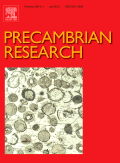
PRECAMBRIAN RESEARCH
Illuminating the Precambrian: Where Earth’s History BeginsPRECAMBRIAN RESEARCH is a leading peer-reviewed journal published by Elsevier, dedicated to advancing the field of Earth sciences, with a specific focus on the study of the Precambrian era. With its distinguished Q1 ranking in both Geochemistry and Petrology and Geology, this journal plays a critical role in disseminating high-impact research, thus contributing to its impressive standing, ranked in the top percentages in Scopus for related fields. Founded in 1974, the journal has evolved continually, ensuring comprehensive coverage of geological aspects spanning from geochemical processes to petrological studies. Researchers and students alike will find this journal indispensable for accessing cutting-edge findings, methodologies, and innovative perspectives essential for understanding the Earth’s formative years. Although it does not provide an open-access option, its subscription provides a gateway to a wealth of knowledge and groundbreaking research pivotal for scholarly advancements leading up to 2024.
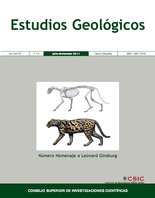
ESTUDIOS GEOLOGICOS-MADRID
Fostering Collaboration in Earth and Planetary Sciences.ESTUDIOS GEOLOGICOS-MADRID is a prominent journal in the field of geology, published by the esteemed Consejo Superior de Investigaciones Científicas (CSIC) in Spain. Established in 1976, this Open Access journal has been a vital resource for researchers and professionals since its inception. With an impact factor reflecting its contribution to the Earth and Planetary Sciences community, ESTUDIOS GEOLOGICOS-MADRID currently holds a Q3 category ranking in Geology as of 2023, showcasing its relevance and quality within the discipline. The journal publishes a diverse array of geological studies, ensuring wide-reaching access to significant research findings, thereby promoting collaboration and knowledge sharing. Established as a platform for both foundational research and applied geology, this journal fosters academic growth and contributes to understanding the Earth’s processes. Researchers, professionals, and students are encouraged to explore its extensive archive, which includes publications from 1976 to the present. For more information, visit the journal's editorial office at Editorial CSIC, C/VITRUVIO 8, 28006 MADRID, SPAIN.

Acta Geochimica
Pioneering Research in the Chemical Composition of Our World.Acta Geochimica is a prominent academic journal published by SPRINGER INT PUBL AG, focusing on the dynamic fields of Geochemistry and Petrology. Established in 2016, this peer-reviewed publication has quickly gained recognition within the scientific community, currently holding a category quartile ranking of Q3 in Geochemistry and Petrology as of 2023. With its ISSN 2096-0956 and E-ISSN 2365-7499, the journal offers a platform for researchers and professionals to disseminate and discuss significant advancements in the study of the chemical composition of the Earth and other celestial bodies. While it is not an open-access journal, Acta Geochimica plays a vital role in fostering collaboration and innovation among scientists, contributing to a deeper understanding of geochemical processes. Located in Switzerland at Gewerbestrasse 11, Cham CH-6330, Switzerland, this journal is a critical resource for students, researchers, and professionals seeking to push the boundaries of knowledge in Earth sciences.
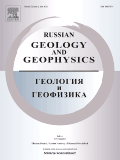
Russian Geology and Geophysics
Connecting Knowledge and Innovation in Earth SciencesRussian Geology and Geophysics is a seminal journal published by GEOSCIENCEWORLD that plays a pivotal role in the dissemination of vital research within the realms of Earth-Surface Processes, Geology, and Geophysics. With an ISSN of 1068-7971 and an E-ISSN of 1878-030X, this journal has witnessed a continuous evolution since its convergence in 2007 and is poised to thrive through 2024. While it is not an Open Access journal, it is recognized for its significant contributions to the academic community, holding a respectable Q2 ranking in Earth-Surface Processes and Q3 rankings in both Geology and Geophysics as of 2023. The journal’s impact factors align it within competitive quartiles, marking it as an essential resource for researchers and professionals seeking to stay at the forefront of geological and geophysical sciences. By publishing high-quality peer-reviewed articles, the journal fosters an environment of knowledge sharing and innovation, making it indispensable for students, practitioners, and scholars alike who are dedicated to advancing our understanding of Earth's complex systems.
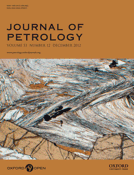
JOURNAL OF PETROLOGY
Illuminating the Foundations of Geophysics and MineralogyJOURNAL OF PETROLOGY is a prestigious academic journal published by Oxford University Press, dedicated to the fields of geochemistry, petrology, and geophysics. Established in 1960, it has garnered significant recognition within the scientific community, currently holding an impressive Q1 ranking in both Geochemistry and Petrology as well as Geophysics, as of 2023. The journal is indexed in Scopus, ranking 20th out of 165 in Geophysics and 31st out of 154 in Geochemistry and Petrology, reflecting its high impact and contribution to Earth and Planetary Sciences. Designed for researchers, professionals, and students, the journal publishes cutting-edge research and reviews that advance our understanding of igneous and metamorphic processes, mineralogy, and the Earth's structure. With a commitment to rigor and scientific excellence, JOURNAL OF PETROLOGY serves as a vital resource for developing new concepts and methodologies in the study of Earth’s materials and processes.
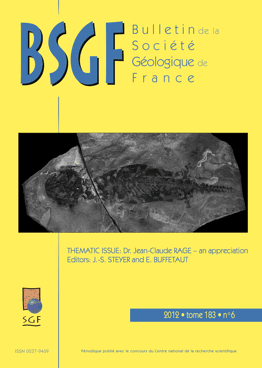
BSGF-Earth Sciences Bulletin
Navigating the Depths of Earth Sciences ExcellenceWelcome to the BSGF-Earth Sciences Bulletin, a premier open-access journal published by EDP SCIENCES S A that has been illuminating the field of earth sciences since its inception. With an ISSN of 0037-9409 and an E-ISSN of 1777-5817, this journal has established itself as a vital platform for disseminating significant research findings and innovative studies in Earth and Planetary Sciences. Operating out of France, BSGF is recognized for its rigorous peer-review process and its commitment to accessibility, having transitioned to open access in 2018. This stature is reflected in its outstanding rankings, placing it in the Q1 quartile within both Earth and Planetary Sciences and Geology disciplines, and ranking #35/195 overall in the Scopus database. Researchers, professionals, and students alike will find the BSGF invaluable for its high-impact articles, which span a wide array of sub-disciplines, addressing both foundational concepts and contemporary challenges in earth sciences.

Mineralogical Journal-Ukraine
Exploring innovative research in mineral exploration and petrology.Mineralogical Journal-Ukraine is a key academic publication dedicated to advancing the field of mineralogy and geochemistry, under the esteemed auspices of the M.P. Semenenko Institute of Geochemistry, Mineralogy & Ore Formation of NAS Ukraine. Since its inception in 2019, this journal has established itself as an essential resource for researchers and professionals engaged in the study of energy, fuel technology, and the earth sciences, despite its present rankings reflecting a developing impact within these specific categories on Scopus. Published in Ukrainian and available in both print and online formats, the journal not only aims to disseminate high-quality research but also encourages inclusive access to vital findings in mineral exploration, petrology, and geochemical processes. With a commitment to excellence and an expanding scope of research, Mineralogical Journal-Ukraine stands as a pivotal platform for innovation and collaboration among scientists striving to understand the complexities of mineral formation and ore deposits.
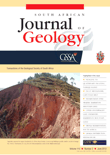
SOUTH AFRICAN JOURNAL OF GEOLOGY
Illuminating the path of geological discovery in South Africa.The South African Journal of Geology (ISSN: 1012-0750, E-ISSN: 1996-8590) is a prestigious academic journal published by the Geological Society of South Africa, dedicated to advancing research and knowledge in the field of geology. Established in 1987, this journal has become a cornerstone for geoscientists, featuring a diverse range of studies that address key geological phenomena, particularly within the South African context. With its current quartile ranking of Q2 and an impressive Scopus rank placing it in the 70th percentile among Earth and Planetary Sciences, the journal is recognized for its significant contribution to the discipline. As researchers and professionals across the globe seek to explore and understand geological processes, the South African Journal of Geology stands out as an essential resource, fostering collaboration and innovation in geoscientific research.
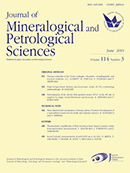
Journal of Mineralogical and Petrological Sciences
Exploring the Depths of Earth’s TreasuresThe Journal of Mineralogical and Petrological Sciences, published by the Japan Association of Mineralogical Sciences, serves as a vital platform for disseminating high-quality research in the fields of mineralogy and petrology. With a presence in both traditional and digital formats (ISSN: 1345-6296; E-ISSN: 1349-3825), this journal fosters scholarly engagement and innovation within these crucial branches of Earth Sciences. As evidenced by its Q3 ranking in both Geology and Geophysics categories for 2023, Journal of Mineralogical and Petrological Sciences maintains a significant standing within the academic community, contributing to the ongoing discourse and exploration of mineralogical phenomena and processes. Researchers, professionals, and students alike will find valuable insights and advancements represented within its pages, with a commitment to inclusivity in research output spanning two decades (2000-2024). Although not currently open access, the journal remains a key resource for understanding the complexities of our geological world.
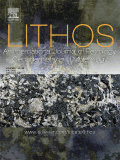
LITHOS
Unveiling Earth's Secrets through Rigorous Scholarship.LITHOS is a prestigious academic journal published by Elsevier, renowned for its contributions to the fields of Geochemistry and Petrology. As an integral platform since 1968, this journal focuses on advancing the understanding of the Earth's composition and processes, adhering to the highest academic standards as evidenced by its Q1 ranking in both Geochemistry and Petrology, and Geology. With an impressive impact factor and substantial visibility in scientific databases, LITHOS caters to a broad audience, including researchers and students eager to engage with cutting-edge studies. Although it is not an open-access journal, its scholarly rigor and relevance have established it as a leading resource for the latest findings and methodologies in Earth sciences. Notably, it ranks #41 in Earth and Planetary Sciences: Geology and #34 in Geochemistry and Petrology, demonstrating its significant influence within the academic community. The journal is based in the Netherlands and continuously opens avenues for innovative research through its commitment to excellence in the geosciences.